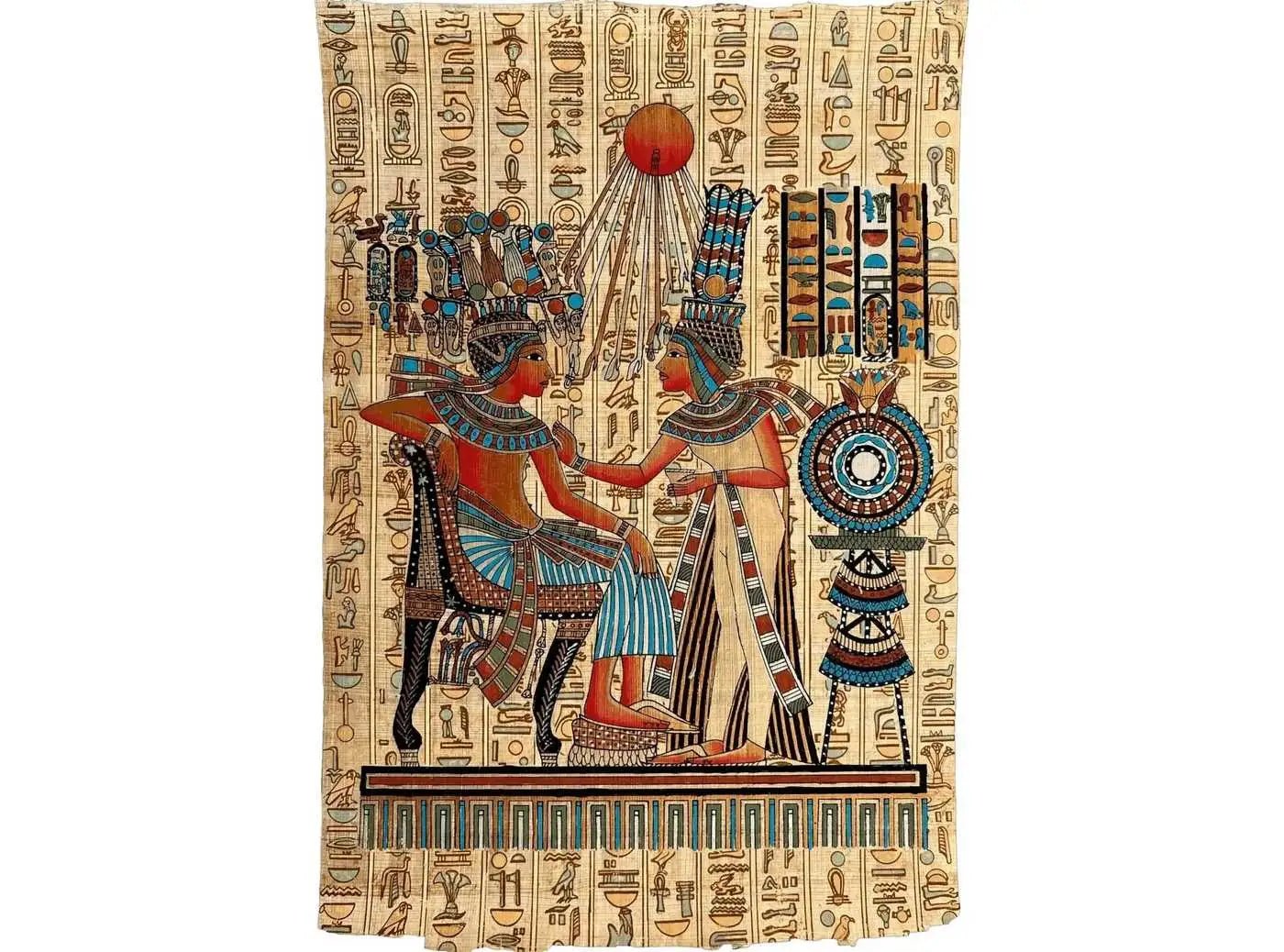The names of Tutankhamun and his royal wife, Ankhesenamun, are forever entwined in the annals of ancient Egypt’s history. Despite their reign being brief and tumultuous, their story captivates historians, archaeologists, and the general public alike. As figures from Egypt’s 18th Dynasty, they represent both the splendor and the struggles of one of the most intriguing periods in ancient Egyptian history.
Tutankhamun: The Boy King
Tutankhamun, famously known as the “Boy King,” ascended to the throne at the tender age of about 9 years old, following the death of his father, Akhenaten, a ruler infamous for attempting to introduce monotheism with the worship of the sun disk Aton. Under Tutankhamun’s reign, Egypt saw a return to traditional religious practices, particularly the worship of Amun and other deities of the Egyptian pantheon. Despite his young age, Tutankhamun’s position was critical in restoring Egypt’s religious and political stability, following the religious upheaval initiated by his father.

Tutankhamun’s reign, however, was short-lived. He died unexpectedly around the age of 18 or 19, sparking numerous theories and speculations regarding the cause of his death. While some suggest that he may have been the victim of a murder, others propose that his death could have been the result of a malaria infection, a broken leg, or genetic disorders, potentially exacerbated by the inbreeding that may have been prevalent in the royal family.
Ankhesenamun: Queen and Political Player
Ankhesenamun, the daughter of Akhenaten and his queen, Nefertiti, played a significant role in the royal court of Egypt. Like her husband, she was likely very young when she married Tutankhamun, possibly around the age of 12 or 13. Her marriage to Tutankhamun not only solidified his rule but also strengthened ties between the royal family and the temples of the gods, especially that of Amun.

Although little is known about Ankhesenamun’s personal life, inscriptions and evidence suggest she was actively involved in the political and religious matters of the time. After Tutankhamun’s death, Ankhesenamun faced an uncertain future. She was left without a male heir, and Egypt was left vulnerable without a successor. In a desperate bid to secure a continuation of the royal line, Ankhesenamun is believed to have sent letters to the Hittite king, offering one of his sons in marriage to her as part of a diplomatic strategy to ensure the succession of Egypt’s throne. The letters, known as the “Amarna Letters”, provide fascinating insight into the political landscape of the time, revealing Ankhesenamun’s role in safeguarding Egypt’s future.
The Legacy of Tutankhamun and Ankhesenamun
Despite their short reign, Tutankhamun and Ankhesenamun’s legacy endures through the discovery of Tutankhamun’s tomb in 1922 by archaeologist Howard Carter. The tomb, one of the most famous and well-preserved royal burials ever found, was filled with stunning treasures, including the iconic golden mask of Tutankhamun. The treasures uncovered in the tomb have provided invaluable insight into the wealth, craftsmanship, and cultural practices of ancient Egypt. However, the tomb also hinted at the royal couple’s struggles, particularly the uncertainty following Tutankhamun’s premature death.

Their story is further marked by the discovery of their royal tomb and the treasures that it contained. The golden burial mask of Tutankhamun, with its intricate details and stunning craftsmanship, remains one of the most recognizable symbols of ancient Egyptian wealth and power. But beyond the treasures, the tomb is a reminder of the fragility of life in ancient Egypt, as well as the challenges faced by Ankhesenamun as a widow with no clear heir.
Enduring Fascination
Today, the tomb of Tutankhamun remains one of the most visited and studied archaeological sites in the world. It continues to offer scholars and tourists a fascinating glimpse into the life and times of Egypt’s “Boy King” and his queen, Ankhesenamun. Their story may have been one of intrigue, uncertainty, and political maneuvering, but it has become emblematic of the rich and complex history of ancient Egypt. The royal couple’s legacy lives on, not only in the treasures found in their tomb but in the ongoing exploration of Egypt’s ancient past. Tutankhamun and Ankhesenamun are remembered not just as rulers, but as symbols of the enduring mysteries of Egypt’s ancient civilization.

